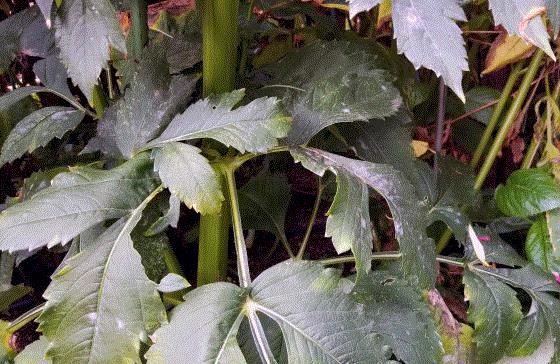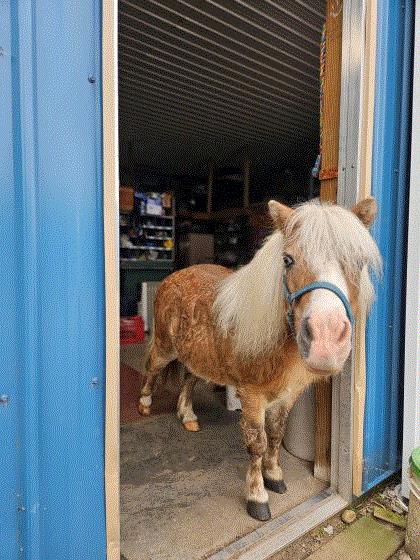September Farm Update

Tater managed to share her seat this week without complaining. It is peak season, after all!
Tater and I hit the road this week to visit some of our florist friends in person. It’s been a while since we’ve been on the delivery route and it was great to connect with them again. For years, Tater and I delivered every stem. As the farm and my responsibilities grew, we hired a delivery driver. But remember, people are buying you as much as they are buying your flowers, and every once in a while I need that reminder. Tater and I haven’t run the truck in a couple of months. It gets comfortable growing the flowers and running the farm. But it’s important to earmark the time to cultivate the personal relationships that make our farm possible.
And everyone loves seeing Tater, it’s the best kind of PR!
Running the truck this week made me super nostalgic—not too long ago Tater and I were pounding the pavement, dropping off samples and visiting flower shops. I had a bucket of flowers in one hand and Tater’s leash in the other. That’s how we got our first customers. Never forget where you came from!
In this edition of Bloom Beat we’re talking about powdery mildew, new Ohio State cut flower research, some flower psychology research from Japan, and naughty ponies!
With all that being said, let’s talk shop!

New OSU Research on Disease Management for Specialty Cuts
Dr. Francesca Hand and her lab at Ohio State University
RESEARCHED anerobic soil disinfestation (ASD) as a means of controlling soil borne pathogens in cut flower production systems.
ASD is commonly practiced on vegetable farms in Japan and the Netherlands. Growers add a carbon source (such as molasses, tomato pomace or wheat bran) into the soil, saturate the soil with water, and cover the soil with an air tight tarp for 3 to 10 weeks. Microbes break down the carbon in anerobic conditions, and the gasses produced by the microbes can reduce or suppress pathogens in the soil.
Dr. Hand and her lab tested ASD in soil-based and soilless production systems and ASD’s effect on rhizoctonia, pythium and phytophthora populations. Here are some findings:
- ASD worked well in controlling Rhizoctonia solani. Treatments in soiless mix using wheat bran or tomato pomace reduced diseased plants by 75-100%. In soil mixes, this treatment reduced “disease incidence” to 0-16%
- Trials using molasses and wheat on ranunculus populations to control pythium yielded similar results to the rhizoctonia trial.
- ASD was not effective in controlling phytophthora in gerbera daisies.
Overall, ASD works well on rhizoctonia and pythium, but it’s not a one-size-fits-all solution to soil-borne disease management. Wheat bran, molasses and tomato pomace as the carbon source controlled the pathogens best. More research is needed to determine the economic benefits for commercial cut flower production.
Check out OSU’s new comprehensive grower
GUIDE. It covers an assortment of fungal, bacterial and viral diseases. The best part is, the digital version is free! Thank you OSU and American Floral Endowment for creating this invaluable resource and funding this research!

Powdery Mildew Alert!

Powdery mildew colonies on shaded dahlia leaves. Photo by Jay Pscheidt 2020.
Tater and I just looked at the ten-day forecast for southeast Michigan and it looks like we are going to be frost-free for the first half of October. This is great news, considering our dahlias have been selling like hotcakes and a long season contributes to our bottom line for the year.
However, there are other considerations for keeping the dahlias churning out blooms. Even though we planted them in a field with excellent air circulation, dewy mornings and high relative humidity this week created perfect conditions for powdery mildew. Powdery mildew spores germinate best under high relative humidity and temperatures over 70F.
According to Michigan State University plant pathologist Dr. Mary Hausbeck, powdery mildew spores can germinate in less than four hours after landing on a susceptible leaf if the conditions are favorable. Once spores germinate, they send feeding structures into the leaf epidermis and siphon nutrients and sugar from plant tissue. That means timely action is required to ensure we have pristine dahlias to sell over the next few weeks.
HERE is an article from Mary on powdery mildew tips and tricks. It’s from 2017, but it’s a great introduction to the pathogen. And
HERE is the 2025 updated fungicide recommendations for not only powdery mildew but other insidious plant diseases as well.
Below are some key points and considerations for creating a plan to manage powdery mildew on your dahlias:
- First and foremost, if you have a crop that is prone to powdery mildew, plant it in an area with excellent ventilation. This reduces humidity and leaf wetness.
- If you are using fungicides, it is important to rotate your modes of action to avoid pathogen resistance. Be sure to use different FRAC codes.
- There are biopesticide options for powdery mildew such as horticultural oils, sulfur and potassium bicarbonate.
- Check with your closest land grant university to see what fungicides and biopesticides work best in your area. Strains of pathogens can vary by state and region.
- Avoid overhead irrigation if possible—try to keep the foliage as dry as possible.
- Powdery mildew spores can overwinter in leaf litter, so take infected compost off site or destroy it.
- Check lower leaves and plants in shady areas, as these are usually the first plants to get infected (as seen in the photo above).

Psychological Effects of Flowers on Office Workers

I found this ARTICLE in one of my late-night scrolling sessions. Researchers from Center for Environment, Health and Field Sciences at Chiba University in Japan looked at the effects of viewing flowers in a work environment had on employees. Do flowers in the work place give any health or emotional benefits to workers? The goal was to clarify the psychological and physiological relaxing effects of exposure to roses in an office setting.
Researchers had 31 male office workers view an arrangement of 30 unscented roses in a vase for four minutes. A control group looked at a blank wall. Scientists measured participants’ heart rates, and participants completed at questionnaire assessing their feelings before and after viewing the arrangement. The research revealed:
- Data showed parasympathetic activity (relaxation) was significantly higher for men viewing the roses.
- Participants that viewed the flowers reported feeling more comfortable, relaxed and natural.
- Viewing flowers can reduce stress and offer preventative medical benefits. This can be a simple and cost-effective way for employers to improve health of office workers.
We know the positive effects our flowers have on our lives. Just looking at flowers for a few minutes promotes physical and emotional well-being. For folks spending a lot of time indoors, cut flowers are a way to bring nature inside and provide some of the same psychological benefits as being outdoors.
Keep this study handy—it might give you some creative social media fodder for this winter. Also, showing folks the benefits of flowers in the workplace might be a good way to sell weekly bouquet subscriptions to businesses in your area.

Any Ideas for Managing This Pest?

Dierks is my beloved palomino pony ... he likes to eat colorful salads ... and anemones!
This edition of Bloom Beat has been heavy in the pest management content. But this time, we need some advice from you!
For those of you who follow us on SOCIAL MEDIA, you’ve seen our naughty palomino pony highlighted in our posts. Last week, Dierks got out of the horse pasture and ended up in the greenhouse, munching on our early season anemone. Thankfully, damage was minimal and the handful of uprooted anemone plants were tucked back into their planting beds. Team Forget Me Not got a good laugh, and so did our followers. This “pest” is lucky he is cute, otherwise a comprehensive IPM plan would be required!
I hope this made you smile. Tater and I are cheering for you and your teams to finish the season strong. Are there any mischievous creatures on your farm causing a ruckus? Tater and I would love to meet them! DROP US A LINE.
We're Cheering For You!
Lindsay Daschner (and Tater)
Editor-at-Large—Bloom Beat
Owner—Forget-Me-Not Farms
This email was received by 6,248 of your fellow fresh-cut flower growers!
If you're interested in advertising in Bloom Beat, contact Kim Brown and she will hook you up!